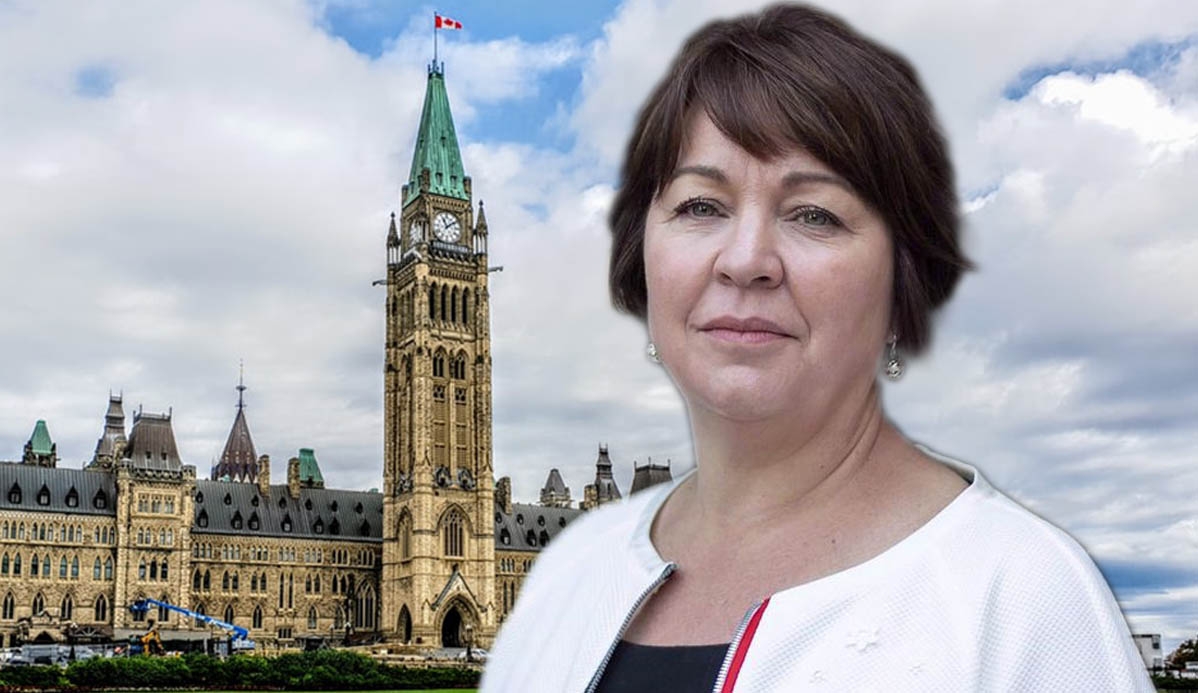
Controversial Public Servant Cuts Coming – Canada’s Magic Shrinking Trick
Public Servants Series
What will Canada look like if tens of thousands of public sector jobs are lost by the end of this year? That is the question plaguing economists, unions and political analysts alike. These potential job losses follow the federal Conservative government’s announcement to freeze wages and deliver $8 billion in cuts over the next five years. The goal? Rid Canada of its $56 billion deficit over the same time period. Last year’s announcement prompted a collective gasp of horror. Not since Paul Martin’s 1995-96 austerity Budget has Canada seen anything close to such numbers. That was the year Ottawa cut program spending by 8.8 per cent and reduced public sector employment by 14 per cent. Cuts of that magnitude loom again. Treasury Board President Tony Clement told the Empire Club of Toronto in January the cuts could be as deep as ten per cent, which equates to spending “of anywhere between $4 billion and $8 billion.” Without question, Canada will feel the reductions. Big time.
And while Martin’s shrinking trick saved Canada from becoming, as the Wall Street Journal put it “an honorary member of the Third World” this time around there are poignant differences. The Conservative’s $4 billion program spending cuts amounted to less than 2 per cent of total federal spending. (This would the Treasury Board maintains, return the federal government to a balanced budget in 2015/2016.) The Chrétien-Martin cuts amount to spending cuts of more than 2.7 per cent of GDP. What really makes the impact different this time around is the nature of the cuts. Martin’s 1995-1996 Budget spread the pain – payments to individuals, transfers to other levels of government and direct program spending. The current Conservative government’s focus is on direct program spending which means highly concentrated layoffs of the public-sector employees that deliver them. And it is this aspect that has the public sector unions worried – very worried.

The Professional Institute of the Public Service of Canada (PIPSC) that represents 57,000 government scientists and professionals maintains Canadians will lose all round. The cuts will imperil the economy and leave Canadians bereft of crucial public services. (An economic analysis by the Canadian Association of Professional Employees (CAPE) released in February projects the loss of up to 116,000 jobs in Canada’s public and private sectors. CAPE argues this will topple Canada into recession.) How can a country with a gutted public sector provide sufficient public services? Gary Corbett, PIPSC President remains dedicated to doing just that. “We are committed to defending the public good due to the erosion of public services and the related economic and social impact of job losses on communities across the country.”
The type of public services slated for cuts also concerns Corbett. “Our members are professionals whose jobs can be summed up as protecting Canadians. Any time thousands of their positions are on the line, public safety demands a full and transparent accounting of the impact,” says Corbett. Earlier this year, the government announced the layoffs of food and safety inspectors and scientists that monitor water quality and pollution levels – that is, public servants crucial to the functioning of a first-world country. Read more about PIPSC on page 54 of Ottawa Life Magazine March/April Edition.
An analysis by economic think tank the Canadian Centre for Policy Alternatives (CCPA), “The Cuts Behind the Curtain: How federal cutbacks will slash services and increase unemployment,” validates Corbett’s concerns. The CCPA estimates federal government employee job losses of between 60,100 and 68,300. The City of Ottawa would be especially hard hit. Our city’s unemployment rate would soar from 6.2 per cent to 9.2 per cent.
The CCPA also looked at programs that would be cut. Some of the most vulnerable are hit hard. Support for low-income families, seniors, the unemployed, environmental programs, programs for Aboriginal on-reserve housing, training and primary health care and workplace and food safety inspectors would all be cut. Canada, the CCPA report maintains could lose up to 1,500 food and safety inspectors in the Canadian Inspection System – all within 12 months. “This” the report added, “despite Canada’s still-vivid memory of the 2008 listeriosis outbreak.” (This refers to the Maple Leaf Foods tainted cold cuts incident that killed 23 Canadians.) And if that wasn’t enough, Canada’s international profile would be hurt. Cuts to Canada’s international development program would also be affected.
Proposed by the Tories is $1 billion in cuts over the next fiscal year, $2 billion for 2013-14 and $4 billion (which could go as high as $8 billion) by 2014-15. Under the microscope are 70 government departments and agencies which are required to submit scenarios for a five and ten per cent cut to their budgets. This, the Tories say, will help eliminate a $31 billion deficit by 2015-16.

A way of assessing the potential impact of the cuts is to compare and contrast the Tory slash plan with the size and shape of the 1995-96 budget cuts. At the time of the 1995-1996 cuts, the world had written off Canada as an economic basket case. Ottawa cut deep and Canada rebounded. The GDP grew an average of 3.3 per cent a year. Canada then proceeded to outpace other G-7 economies, investment grew 5.4 per cent a year and employment expanded by 2.1 per cent. The number of welfare recipients halved and the national debt fell to 29 per cent in 2008-2009 from 68 per cent in 1995-96. The federal Conservatives believe the 2012 cuts might set Canada on track again. But the tone, the vein and intent feel different this time around. Many argue the Tories are targeting many of the programs and public services that are defining features of the Canadian fabric, what makes our country unique.
Might there be another solution to Canada’s deficit conundrum than across-the-board cuts to government departments?
Lieutenant-General Andrew Leslie, who commanded the Canadian army during the Afghanistan mission thinks so. So do economists and social think tanks like the Canadian Centre for Policy Alternatives, the C.D. Howe Institute and even the Conservative Fraser Institute.
Leslie proposes a nuanced approach. Instead of axing across the board, cuts should be targeted. Ironically, he says the Department of National Defence should be cut. In Report on Transformation 2011, Leslie proposes a wholesale deflation of the national headquarters of Department of Defence. Among the 43 recommen-dations is the redeployment and elimination of 3,500 regular forces personnel and 3,500 civil servants in the department, cutting 30 per cent from the $2.7 billion spent each year on private contractors, consultants and services and the consolidation of departments that overlap and dupli-cate each other.

Niels Veldhuis, Vice-President of Canadian Policy Research at the Fraser Institute, advocates a Martin-era redux. “What they did was to put every single government department under a series of six tests. This is something the current government should do today.” The final results might, Veldhuis suggests, result in some departments being unaffected by cuts, some being disbanded altogether with others falling mid-way. The Martin tests included assessing departments on affordability, ability to serve the public interest, scope for private/public sector partnerships and the necessity of government involvement. Reductions at the spending level are another solution to Canada’s deficit woes. Veldhuis suggests the removal of the 100-odd “special treatments” such as credits and allowances offered by the government to the ordinary taxpayer through to corporations.
David Macdonald, Senior Economist at the CCPA, the Fraser Institute’s ideological counterpoint, offers another solution Canada’s deficit woes – eat the rich. Solutions include a new tax income bracket for Canadians who earn $250,000 a year or more, closing high end tax loopholes for Canada’s ultra wealthy, getting rid of the capital gains tax and capping Registered Retirement Savings Plan (RRSP) contributions to $15,000 instead of the current $22,000. Only wealthy Canadians can contribute $22,000 a year, turning RRSPs into a tax shelter for the rich.
Alexandre Laurin from the C.D Howe Institute offers other revenue raising solutions – user fees for services offered by Crown Corporations, the full or partial privatization of government services and switching the tax mix from corporate taxed to consumption taxes. Easing the corporate tax burden would Laurin says “create more economic growth.”
But no matter the solution to Canada’s deficit woes, the effects of the government’s plans on the country remain a dark horse. As the government unveils its budget, things will likely become a bit clearer. But it has been a situation that, Corbett, as the head of Canada’s largest professional public sector employee union, finds unacceptable. “For us it is about working smarter, not cutting the public sector wholesale, it’s about better planning and identifying where you want to take the public service.” Time will tell where Canada’s public service will end up and where Canadians are going to feel the pinch.
SIDEBAR: Finance Minister Jim Flaherty disagrees with conclusions in report by CAPE

While public sector service unions are heeding CAPE’s findings, Canada’s Finance Minister Jim Flaherty dismisses them. In February, Flaherty told CBC’s Evan Solomon that CAPE’s projected $8 billion cuts are “way outside the realm of possibility.” As for the prospect of 116,000 job losses, Flaherty stated the government has “a very complicated process for work adjustment in the federal government. Nothing happens quickly in terms of work adjustment changes: it takes a year or two, even perhaps three in some cases, so moderation in all things, and we have a fair amount of attrition.” However, when Solomon probed Flaherty on the scope of the estimated between 5-10 per cent cuts Flaherty remained tight-lipped. “We’re working on it, reviewing all the work of the Deficit Reduction Committee and we’re not at final figures and I’m not being coy about that,” Flaherty said. With the 2012 Budget being tabled in the House of Commons on March 29, only time will tell.








